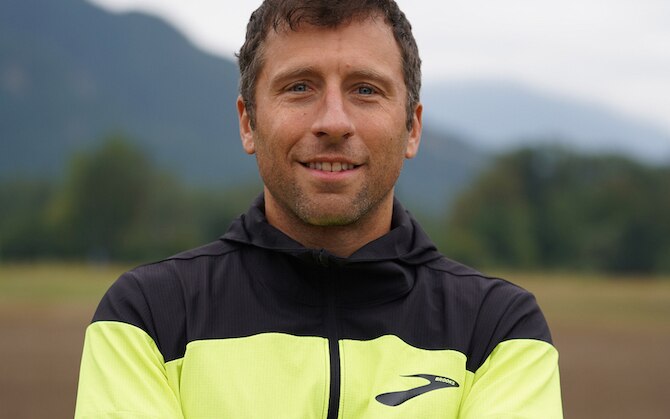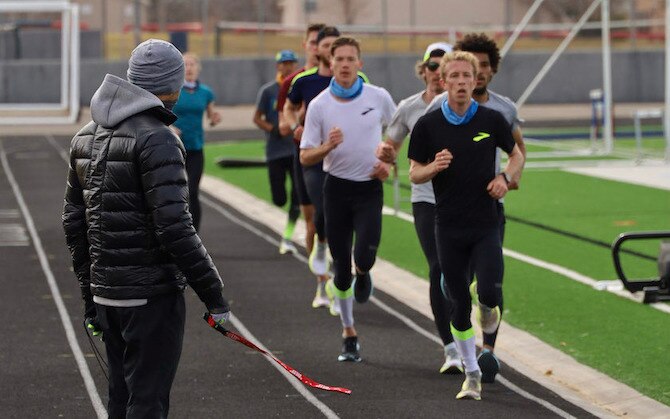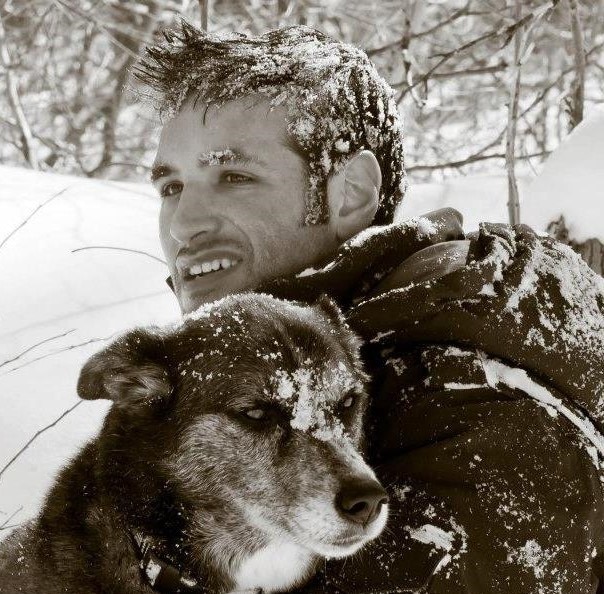Improve your kilometre split with this 8-week training plan.

Want to run faster? Of course you do! As a runner, moving faster and consistently crushing your personal records is an amazing feeling that will keep you motivated from one workout to the next. To help you build a faster kilometre split, we've enlisted the help of Danny Mackey, coach of the Brooks Beasts running team.
Throughout his career, Danny has coached an Olympian, a world record holder, American and Scottish national record holders, and four world medal holders. These days, Danny coaches the Brooks Beasts Track Club, a team of 13 elite athletes based out of Seattle. In short, coach Mackey knows a thing or two about running.
To increase your speed, Danny has designed an eight-week program that focuses on improving your one-kilometre split — which introduces a fun bit of runners' jargon. Let's be clear about this: Improving your kilometre split is not just an issue of running a faster kilometre. In the running world, "splits" refer to sections of a run that are all a specific distance. So, in this case, a kilometre split would divide a longer run into kilometre-long chunks. Monitoring the time it takes to run these splits is a great way to control your pace and effort throughout a long run or even a race.

Before you get started
Before you tackle this kilometre split training plan, there are some things you should keep in mind. First, this schedule will ask you to run four days each week, with time for rest in between some of the more challenging workouts. While you might need to move some specific days around, it's best not to mess with the rest days too much. These days are vital so that your body can fully recover and perform its best for each workout.
As you read through the plan, you'll likely notice the workouts vary in intensity level and there is some flexibility in the exact length of the runs. This is so you can scale the workout to your specific running level. As a guideline, an "easy" workout is one that increases your heart rate slightly but one at which you can easily carry on a conversation. Think a two or three on a scale out of 10. On the days that call for "moderate" effort, though, you'll be at more of a four or five.
The workout schedule also uses hill sprints and track measurements throughout, so that may take some planning depending on where you usually run. Of course, a treadmill can be used to simulate hills if it's a challenge for you to find some real-world elevation to overcome. Whatever you have to do, though, don't overlook this part of the program. The muscles used to climb hills are the same ones used for sprinting, making inclined running an incredibly effective way to increase your speed.
As you progress through the plan, your overall mileage for each week is going to steadily increase. Additionally, the duration and frequency of your sprints will vary from week to week.

The kilometre split training plan
Moving forward faster
So, are you excited to become a faster runner? Stick to this plan, and you'll have the workout tools to help you build a faster kilometre split.
Of course, building a faster split is just one part of your journey toward running greatness. Once you've completed this routine, come back for another one that fits your next goal! Remember, too, that all of this running is going to punish your shoes. To get the most out of this training plan (and all of your workouts) and ensure you have the footwear to match your new speed, use our Shoe Finder tool.
Our writer's advice is intended for informational or general educational purposes only. We always encourage you to speak with your physician or healthcare provider before making any adjustments to your running, nutrition, or fitness routines.
